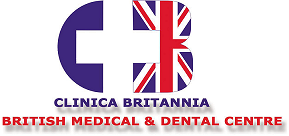The photodynamic therapy with Multidiode™ 630 PDT is an innovative minimally invasive option for multiple diseases, that improves the quality of life of patients, avoiding surgery, hospitalizations and downtime.
Photodynamic Intralesional Therapy (PDT) is specially indicated for certain diseases such as perianal fistulae, suppurative hidradenitis and other skin diseases such as warts, skin carcinoma and skin keloid or other non-aesthetic scars. The novelty of this technique consists on the fact that the scalpel is no longer needed, and a newest generation laser is used instead. For such purpose, a sensitizing substance is injected in the lesion, so the inflammatory or malignant cells contained in the lesion become sensible to the laser light; this causes a destruction of the inflammatory cells and induces a regeneration with normal tissue, being totally respectful to normal cells, therefore the technique will not harm any surrounding structures such as normal skin, muscles and other tissues.
What is basal cell carcinoma?
Basal cell carcinoma (BCC) is a type of skin cancer that begins in the basal cells. Normal basal cells line the epidermis. They’re the skin cells that replace old cells with new ones. Cancer of the basal cells results in tumors that appear on the skin’s surface. These tumors often look like sores, growths, bumps, scars, or red patches.
While BCC almost never spreads to other places in the body (metastasizes), it can still result in disfigurement. In rare cases, it can spread to other parts of the body. If it does, it can become life-threatening.
BCC is the most common type of skin cancer.
ADVANTAGES OF PDT:
This minimally invasive and effective treatment method has many advantages for both physician and patient:
-
- Selective destruction of the tumor
- No pain
- Does not alter adjacent tissue and organs
- Proven clinical effectiveness
- Effectivene in dermal tumors with great depth and thickness, impossible to obtain with other noninvasive techniques
- Intralesional or percutaneous treatment (penetration up to 1cm)
- 100 times more powerful than led lamps for photodynamic therapy
- Multiapplication PDT platform for Dermatology and Oncology
- Safe, effective and minimally invasive therapy
- Fast, comfortable procedures with nor downtime neither side effects
- Intuitive software with touchscreen. Friendly use
- Accurate control of energy
- No Hospital Stay
APPLICATIONS
Indications in Oncology
- Non-small cell lung cancer (NSCLC)
- Total or partial obstructive esophageal cancer
- Barrett’s esophagus
- Cholangiocarcinoma
Indications in Dermatology
- Basal-cell carcinoma
- Hidradenitis suppurativa
- Fistulas
- Basaliomas
- Actinic keratosis
- Bowen’s Disease
- Paget’s Disease
- Leucoplakia
- Viral Warts
[:]

